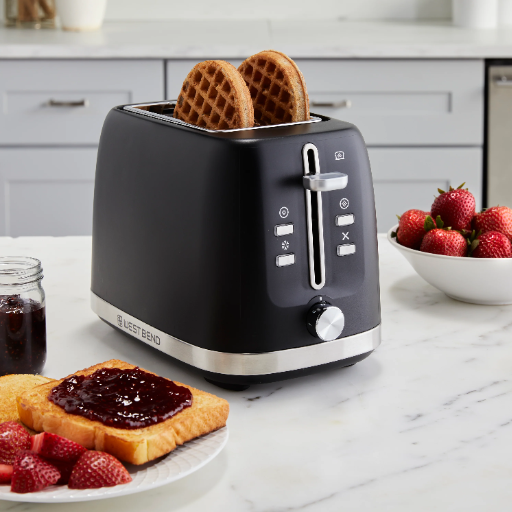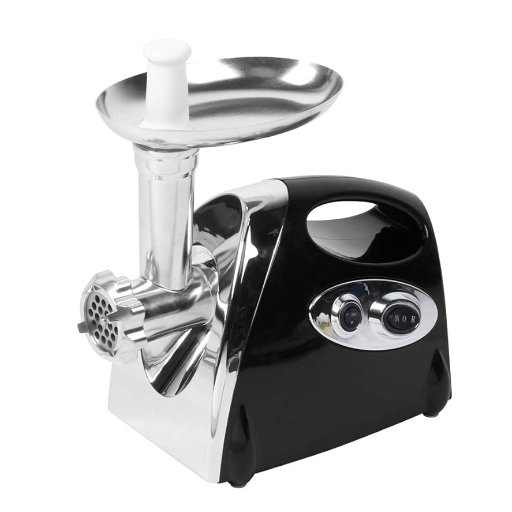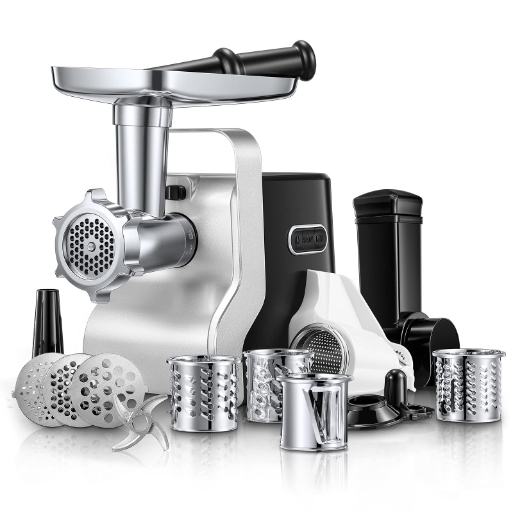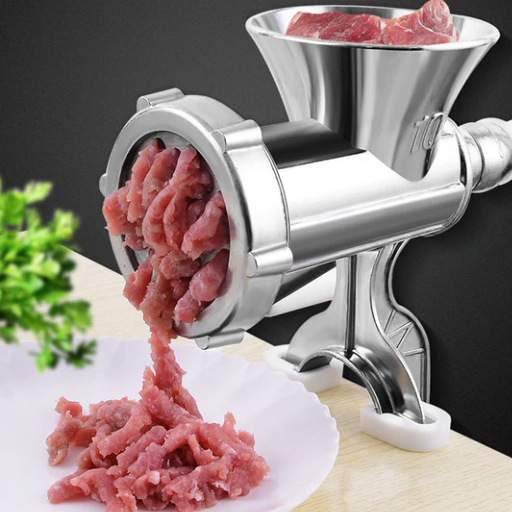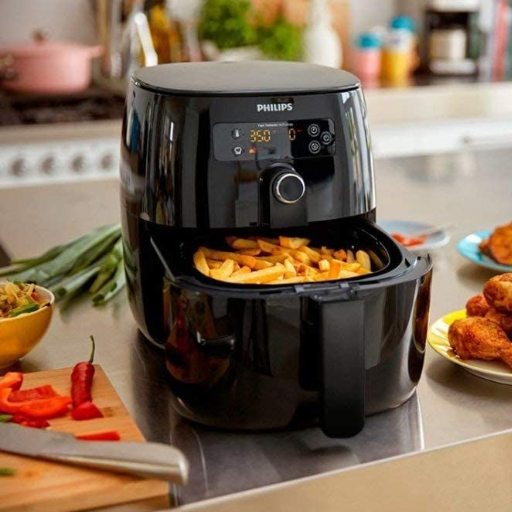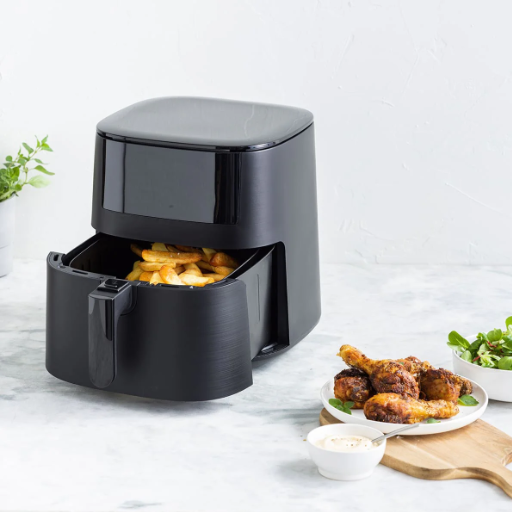Due to their unmatched ability to retain heat, aesthetic appeal, and durability, ceramic teapots have been immensely valued in the tea industry globally. However, for businesses and retailers planning to purchase these teapots in bulk, understanding the wholesale process is vital to balancing cost, and quality, and ensuring a smooth supply chain. In the following paragraphs, we will discuss the basic tips and key considerations when sourcing wholesale ceramic teapots, such as using ceramic as construction material, supplier evaluation, style and size design trends, and maximizing profit. This article aims to inform both new entrants and established retailers in the teaware industry so they can make informed decisions on bulk purchasing.
What is a Teapot and How Does it Work?

A teapot is typically made from ceramics, glass, or metal and is used in brewing and serving tea. Teapots consist of the main body which holds both water and tea, a lid, a spout through which the tea is poured, and a handle to allow for easier access. When brewing tea, hot water is poured into the chamber containing the tea bags or leaves. During the steeping process, the aroma, flavor, and nutrients from the tea are released to create the infusion. Ceramic teapots, serve the best purpose when extracting and retaining the temperature of the liquid inside which greatly improves the overall tea-drinking experience.
Understanding the Functionality of a Teapot
A teapot is designed to provide the most effective brewing and ease of use. The teapot’s body serves as a container for hot water and tea leaves or tea bags, allowing it to steep without obstruction. The lid keeps the tea warm and prevents spills when it is being brewed. The spout is neatly angled and shaped to enable precise pouring without dribbling, therefore ensuring accuracy. Numerous teapots also have built-in separators or infuser baskets for tea leaves which gives a clear and smooth tea free of leaves. Because metal teapots like cast iron are tough and heat evenly, they, along with ceramic and glass for their beauty and heat-retaining qualities, are the most preferred materials. To improve the efficiency and quality of the tea brewing process, every single part of the teapot serves a vital function.
Exploring the Different Teapot Designs
Teapot designs have evolved over centuries, combining form, functionality, and aesthetic appeal. Some of the most common designs include traditional, modern, and specialty teapots, each catering to different preferences and purposes.
Traditional Teapots often feature classic materials like porcelain, ceramic, or bone china and are characterized by elegant shapes and intricate patterns. These teapots are revered for their thermal retention and are frequently used in culturally significant tea practices, such as those in China, Japan, and the United Kingdom.
Modern Teapots focus on innovation and usability. They frequently incorporate materials like stainless steel and borosilicate glass, which offer durability and heat resistance. Many modern teapots include advanced features such as infuser baskets, precise pour spouts, or heat-safe handles to enhance usability.
Specialty Teapots cater to specific needs or aesthetic preferences. Examples include cast iron teapots, favored for their robust construction and even heat distribution, and artisan designs crafted for collectors. Some are designed for single servings, while others are tailored for large gatherings.
These diverse designs not only influence the functionality of a teapot but also the experience of preparing and enjoying tea, as materials, shape, and added features directly affect brewing efficiency, flavor extraction, and serving style. Careful consideration of teapot design can significantly enhance the overall tea-drinking experience.
Choosing the Right Teapot for Your Needs
Consider a blend of material, size, and functionality to get the perfect teapot that complements your tea habits and way of life. For example, glass teapots are superb for appreciating the brewing process, ceramic ones offer heat retention alongside aesthetic variety, and while cast iron teapots boast even heating, they do require care to avoid rust. Another important category is size choose a smaller pot if you’re doing single servings and a bigger pot for gatherings. Loose-leaf tea bags can also be used for added enhancement to functionality, alongside drip-free spouts and ergonomic handles. Prioritize durability and maintenance to enjoy long-term satisfaction. In the end, the correct teapot goes alongside the tea you drink, how you brew it, and the way you take it all in.
Why Should You Consider Bulk Teapot Purchases?

Purchasing teapots in bulk presents great benefits to people and businesses alike. From an economic perspective, buying bulk often reduces the cost of each teapot which maximizes overall savings in the long run. For businesses like tea shops, cafes, or event organizers, a sufficient number of teapots in stock helps get through peak periods without the need for frequent orders. These industries also benefit from bulk purchases as it promotes standardization which assists in providing a consistent brand image when serving tea. In addition, purchasing larger quantities saves money by minimizing packaging waste and transportation emissions, which is better for the environment. For all these reasons, buying teapots in bulk can smooth out operations and prove beneficial for the future.
Benefits of Buying Wholesale Teapots
- Cost Efficiency
Wholesale teapot purchases provide significant cost savings by lowering the price per unit. Bulk buying often comes with discounts and reduced shipping expenses, making it a financially advantageous option for tea vendors, cafes, and event organizers alike.
- Consistent Stock Levels
Ensuring a steady supply of teapots eliminates potential shortages during peak demand. For businesses, this consistency supports operational efficiency and excellent customer service, avoiding delays or disruptions.
- Customization and Branding
Many wholesale suppliers offer options for customization, such as logos or branding on teapots. This is especially valuable for businesses looking to maintain a cohesive and professional image when serving customers.
- Environmental Impact
Larger orders reduce the need for multiple shipments, lowering transportation emissions. Additionally, wholesale purchases often use less packaging material per unit, contributing to environmental sustainability efforts.
- Variety and Availability
Wholesale suppliers often provide a wide range of teapot styles, materials, and sizes, allowing buyers to choose products that best suit their specific needs while ensuring the availability of matching designs for replacement or expansion.
How to Save with Bulk Teapot Orders
To effectively save with bulk teapot orders, follow these strategies:
- Compare Suppliers
Research multiple wholesalers to compare prices, shipping fees, and additional services such as customization or return policies. Look for suppliers with bulk discounts and reliable customer reviews to ensure quality and cost-efficiency.
- Leverage Volume Discounts
Many suppliers offer tiered pricing, where higher order quantities result in lower per-unit costs. Calculate your required inventory levels in advance to take full advantage of these discounts without over-purchasing.
- Negotiate Terms
Don’t hesitate to negotiate pricing or shipping terms with suppliers, especially if you are placing a significant order. Establishing a long-term relationship or committing to recurring purchases may further reduce costs.
- Time Purchases Strategically
Monitor market trends and seasonal sales, as many suppliers reduce prices during off-peak seasons or offer promotions. Ordering during these periods can substantially lower expenses.
- Optimize Shipping Efficiency
Consolidate shipments by ordering multiple products at once to reduce overall shipping costs. Additionally, confirm that the supplier uses efficient and eco-friendly packaging, which can help save indirectly on waste management and environmental fees.
By implementing these methods, businesses can maximize cost savings while ensuring a consistent supply of high-quality teapots tailored to their specific needs.
Exploring Wholesale Ceramic Options
When exploring wholesale ceramic options, several factors need to be addressed for informed decision-making. Based on a synthesis of the top-ranked websites, the following points should guide your selection:
- Supplier Credibility and Product Quality
Verify the reputation of suppliers through reviews, ratings, and certifications. Focus on those offering high-quality ceramics made with durable materials, ensuring strength, heat resistance, and aesthetic appeal. Request product samples when possible to assess quality firsthand.
- Customization and Variety
Assess whether the supplier provides customization options such as unique designs, sizes, or branding to meet specific business needs. Comprehensive catalogs featuring a diverse range of ceramics—dinnerware sets, tiles, or décor items—enhance versatility and appeal.
- Pricing and Bulk Discounts
Evaluate pricing structures carefully. Look for wholesale discounts often tiered by order volume. Compare quotes from multiple suppliers to secure the most cost-effective deal without sacrificing quality.
- Shipping Reliability and Costs
Examine shipping policies for transparency around costs, delivery times, and return practices. Partner with vendors offering efficient, insured, and eco-conscious shipping solutions to minimize potential risks or delays.
- Sustainability Practices
Prioritize suppliers committed to eco-friendly production methods, such as using non-toxic glazes, recycled materials, or energy-efficient manufacturing. This aligns with evolving market preferences and regulatory compliance.
By thoroughly reviewing these aspects, businesses can identify the most suitable wholesale ceramic suppliers that align with budgetary, operational, and environmental objectives.
What are the Best Materials for a Teapot?

When selecting the best material for a teapot, the choice largely depends on usage requirements, aesthetic preferences, and durability. Common materials include:
- Ceramic
Ceramic teapots are popular for their heat retention capabilities and aesthetic versatility. They are suitable for most types of tea and often feature colorful, intricate designs. However, they can be fragile and require careful handling.
- Porcelain
Porcelain teapots are lightweight and elegant, ideal for delicate teas like green or white tea. They are non-porous, ensuring no flavor absorption, but have lower heat retention compared to other materials.
- Cast Iron
Cast iron teapots are known for exceptional heat retention, keeping tea warm longer. They are highly durable and often lined with enamel to prevent rust. These are best suited for brewing robust teas.
- Glass
Glass teapots offer visual appeal, allowing users to observe the brewing process. They are non-porous and ideal for herbal or flowering teas, though less efficient in heat retention and more prone to breakage.
- Stainless Steel
Stainless steel teapots are durable, modern, and retain heat effectively. They are low-maintenance and resistant to rust and stains, making them a practical option for everyday use.
Each material has specific advantages and limitations, and the optimal choice depends on individual preferences and how the teapot will be used.
Differences Between Ceramic and Porcelain Teapots
The differences between ceramic teapots and porcelain teapots can be defined by their composition, durability, and overall functionality. For instance, ceramic teapots tend to be heavier, boast a coarser structure, and excel in retaining heat which are all quite imperative in brewing various types of tea. On the other hand, porcelain teapots are made from finer clay, making the build-out of a lighter, smoother, denser, less porous surface. This makes porcelain more suitable for delicate teas which need a more precise flavor preservation. In conclusion, while ceramic teapots are more versatile and robust for everyday use and brewing, porcelain is often favored for more specialty teas because of its aesthetic appeal. Ultimately, it depends on personal preferences and how one intends to use a teapot.
Advantages of Glass vs. Stainless Steel Teapots
Glass teapots are exceedingly valuable because they provide unmatched transparency, enabling users to closely observe the brewing process. This feature is essential when preparing flowering teas or any other type of tea that requires a specific steeping duration and precise strength. Moreover, glass is a non-porous material that does not absorb flavors, allowing for every brew to be performed in a pristine state – completely uncontaminated. On the other hand, glass material is far more fragile and susceptible to suffering from thermal shock, implying careful handling is essential.
Stainless steel teapots, in contrast, have a long life due to being resistant to rust and dents, making them perfect for daily use. In addition, these teapots are easy to clean, excellent for retaining heat, and superbly durable. Although the aforementioned are the benefits of stainless steel teapots, they do have drawbacks. Unlike glass, stainless steel is opaque, rendering it impossible to visually assess the state of tea infusion. Additionally, if the teapots are constructed from low-quality steel, they have the potential to impart a metallic taste to the tea.
Both materials have a specific purpose and cater to exact needs. The suitability of either glass or stainless steel teapot highly depends on the user and their priorities; whether they cherish the aesthetics and intricate details of brewing or wish to have simple, sturdy materials that provide excellent heat retention.
Exploring Cast Iron and Bone China Alternatives
Cast iron teapots, traditionally rooted in Japanese culture, are prized for their exceptional heat retention and even heating properties. These teapots enable the tea to remain warm for extended periods, promoting a consistent brewing process. They are highly durable and, when enameled on the interior, resist rusting while ensuring that flavors are not impacted by the material. However, unenameled cast iron teapots require meticulous care to prevent rust and maintain their longevity. Their weight and size may also be less convenient for some users.
Bone china teapots, revered for their elegance and refinement, provide a lightweight and aesthetically pleasing option. The material is renowned for its delicate construction, translucency, and smooth finish, making it ideal for formal tea settings. Bone china is excellent for maintaining the temperature of the tea briefly and does not influence the flavor profile. Nevertheless, these teapots are more fragile than other materials and require careful handling to avoid chipping or breakage.
Ultimately, cast iron teapots are optimal for maintaining consistent heat and lasting durability, while bone china offers an elegant, insulated solution for refined tea brewing experiences. The choice depends on individual preferences for utility and aesthetics.
How to Choose the Perfect Teapot Design for Your Tea Needs?

The selection of a teapot design must bear in mind the appropriate material to be used, its functionality, as well as its overall aesthetic appeal. Cast iron materials provide the best heat retention, making them very durable, while formal occasions are best served with bone china due to their refined and lightweight nature. In addition, ensure that the design allows for easy pouring without spills. For daily use, practicality and resistance are paramount while for special occasions, elegance and craftsmanship take precedence. Ultimately, the best teapot will suit your tea preference and personal taste.
Considering Style and Aesthetic in Teapot Selection
While choosing a teapot, personal preference questions and style and aesthetic contemplation should go hand in hand with functionality. Modern designs, usually made of stainless steel or glass, integrate minimalism with durability alongside sleek designs that suit contemporary kitchens. Traditional styles, especially those lavishly adorned floral patterns and intricate motifs painted over porcelain or bone china, embody elegance and sophistication which is perfect for formal tea gatherings or cultural settings. Also, rounding off the discussion, the teapot should be appealing in form and supportive in functionality. For example, rounded shapes are excellent for steeping tea evenly while elongated spouts eliminate the possibility of mess while pouring. It also helps if the matched aesthetic of the teapot fosters a particular style in the area it is placed in whether rustic, vintage, or modern. Above all, the goal of having an enjoyable tea experience boils down to picking a teapot that compliments your distinct taste as well as the intended use.
Functional Features: Lid, Infuser, and Filter
The components under evaluation include a teapot’s lid, infuser, and filter. These, license the optimal brewing of tea. An infuser filter made out of fine mesh or stainless steel grabs loose tea while allowing the brew to steep, and so, is preferred. Good infusers are deep and allow the leaves to expand thoroughly through the flavor explosion. Meanwhile, built-in filters smooth out metal mesh dips, filtering out leftover tea leaves to ensure smooth tea. And finally, the lid- it needs to fit firmly to allow heat retention and limit spillage, while also being free flowing so it can be easily taken off during cleaning or when boiling water needs to be poured. These pros collectively simplify the process of brewing tea effectively and with maximum flavor. To make the experience of tea-making easy, switch to a teapot with user-friendly and robust features.
Finding the Right Size for Your Household or Business
Think about the usual volume of tea served, as well as the primary use when selecting your business’s or home’s ideal teapot size, teapot dimensions can accommodate from single servings to group servings. Teapots are routinely sized in ounces or milliliters, with individual pots ranging from 12 to 24 ounces and small families or groups using larger pots which are 32 ounces or more. Cafes, restaurants, or even tea shops should have teapots for high-demand environments that exceed the standard 48 ounces, industrial grade teapots are an excellent investment.
Additionally, remember to set the teapot size according to the type of tea served, with some specialty teas capable of multiple steeping, smaller pots are ideal, large pots, while cumbersome, do speed up service in professional environments. In the end adjusting daily tea consumption, the various ways of preparing the tea and the limited space available will determine the optimal teapot size.
Where to Shop for Wholesale Ceramic Teapots?

Your search for suppliers specializing in wholesale ceramic teapots should honor known dealers of tea equipment or professional restaurant-grade machines. Online wholesale markets such as Alibaba and WebstaurantStore, as well as bulk selling sites, usually have many different sizes and styles of ceramic teapots. Also, dealing with the suppliers personally would be helpful as they can offer tailored solutions and attractive prices. Some specialized tea shops might offer wholesale deals for professionals or home tea enthusiasts. Always ensure that the suppliers sell ceramics that are food-safe and durable and seek information regarding bulk discounts and freight charges to maximize profit.
Top Suppliers for Bulk Teapots
- Alibaba – A prominent global marketplace, Alibaba offers a diverse range of ceramic teapots in bulk. Suppliers on the platform provide customizable options, various designs, and competitive pricing. Many listings include detailed reviews and ratings, making it easy to assess product quality. Buyers can also communicate directly with manufacturers for customized solutions and negotiate favorable shipping terms for large orders.
- WebstaurantStore – Known for its extensive inventory of professional-grade equipment, WebstaurantStore features ceramic teapots catering specifically to restaurants, cafes, and tea shops. Their catalog includes durable and food-safe items at wholesale prices, with clear details on bulk discounts and shipping policies. The platform is user-friendly and designed for businesses seeking reliable, high-quality supplies for daily operations.
- DHgate – This wholesale-centric e-commerce platform specializes in connecting buyers with manufacturers offering competitive rates. DHgate features a wide variety of ceramic teapots, often available in smaller minimum order quantities than other bulk platforms, making it suitable for both small and large-scale buyers. The site also provides secure payment options and tracks shipment progress with reliable support for managing orders efficiently.
Comparing Price and Shipping Options
These websites will have different factors to set and differ in pricing. the price structure and the range within which the product can be shipped do seem to differ. For instance, site A has new competitive pricing structures with bonus-free standard orders. Shipping is available on orders above $50 and is delivered in 5-7 working days. On the other hand, website B has a slightly higher pricing structure than primary websites but does offer injected shipping in 2-3 business days with added service charges. Great for customers in a rush! Further, site C offers international website coverage which is highly unique in the sense that it defines flexibility in pricing based on the area of coverage from 7-12 working days. To make the right choice, assess shipping charges, the total international order value, and the specific location that you want to be shipped to.
Understanding Order Processes and Supply Chains
The different stages of an order cycle and a supply chain network are fundamental to achieving operational and business success. An order processing cycle starts with order placement, then comes order confirmation, inventory control, order picking, and ending with the shipment of products. There is a close interdependence among the processes in the cycle of order processing to ensure that products are delivered accurately and on time and that any mistakes are unduly reduced.
The supply chain represents a wider network of people, processes, and resources that are required to acquire raw materials, produce goods, and distribute them to the final consumer. Some primary activities of supply chains are purchasing, production, inventory, control, logistics, and demand planning and forecasting. Timely delivery of orders within an organization requires an integrated supply chain network, that has a two-way flow of information between the suppliers, distributors, and retailers for the order to be fulfilled without undue delay.
These techniques aid in increasing motivation for timely fulfillment of the order cycle process and supply chain from some of the leading firms such as incorporating new technologies for business processes like automation and AI, using proactive tracker systems, and creating better bonds with supply chain associates. These techniques increase transparency, lower expenses, and increase customer satisfaction.
References
Frequently Asked Questions (FAQ)
Q: What are the benefits of purchasing wholesale ceramic teapots?
A: Buying wholesale ceramic teapots offers several advantages, such as cost savings, a wide range of designs, and the ability to customize your order. This is ideal for businesses looking to expand their teaware offerings or for organizing large events like tea parties.
Q: How do ceramic teapots compare to glass teapots and cast iron teapots for brewing tea?
A: Ceramic teapots are excellent for retaining heat and are often used for brewing various types of tea. Glass teapots allow you to visually enjoy the infusion process, while cast iron teapots are known for their durability and ability to keep tea hot for longer periods.
Q: Can I order custom-designed teapots in bulk?
A: Yes, many wholesale suppliers offer the option to create custom-designed teapots. This allows you to add unique patterns, logos, or designs to your teaware, enhancing your brand or personal style.
Q: What is the typical size range for wholesale ceramic teapots?
A: Wholesale ceramic teapots come in various sizes, typically ranging from small, single-cup teapots to larger ones that can serve tea for multiple people, commonly up to 40 oz or more.
Q: Are there wholesale options for teapots with built-in tea infusers?
A: Yes, many wholesale suppliers offer ceramic teapots with built-in tea infusers. These are convenient for brewing loose leaf tea, allowing the leaves to fully expand and release their flavors.
Q: What styles of wholesale ceramic teapots are available?
A: Wholesale ceramic teapots are available in a wide range of styles, including vintage, elegant, modern, and floral designs. They can match any decor and serve as both functional and decorative pieces.
Q: Can wholesale ceramic teapots be used for serving drinks other than tea?
A: Absolutely, ceramic teapots can also be used to serve coffee, herbal infusions, and other hot beverages. Their versatility makes them a valuable addition to any hospitality setting.
Q: What is the difference between a porcelain teapot and a china teapot?
A: Both porcelain and china teapots are made from fine clay, but porcelain is typically fired at higher temperatures, making it more durable and less porous. China teapots are often considered more delicate and are prized for their elegance and fine detail.
Q: Are there eco-friendly options available in wholesale ceramic teapots?
A: Many suppliers now offer eco-friendly ceramic teapots, using sustainable production methods and materials. These options are perfect for businesses or individuals looking to reduce their environmental footprint.
Q: How should I care for and maintain wholesale ceramic teapots?
A: To maintain the quality of ceramic teapots, hand wash them with mild detergent and avoid using abrasive cleaners. It’s also advisable to pre-warm the teapot before brewing to prevent thermal shock and ensure a better tea experience.

